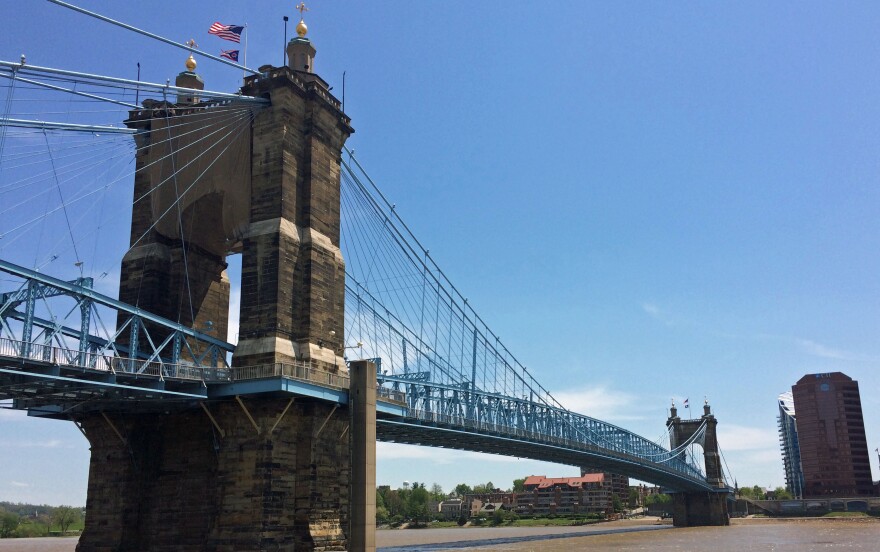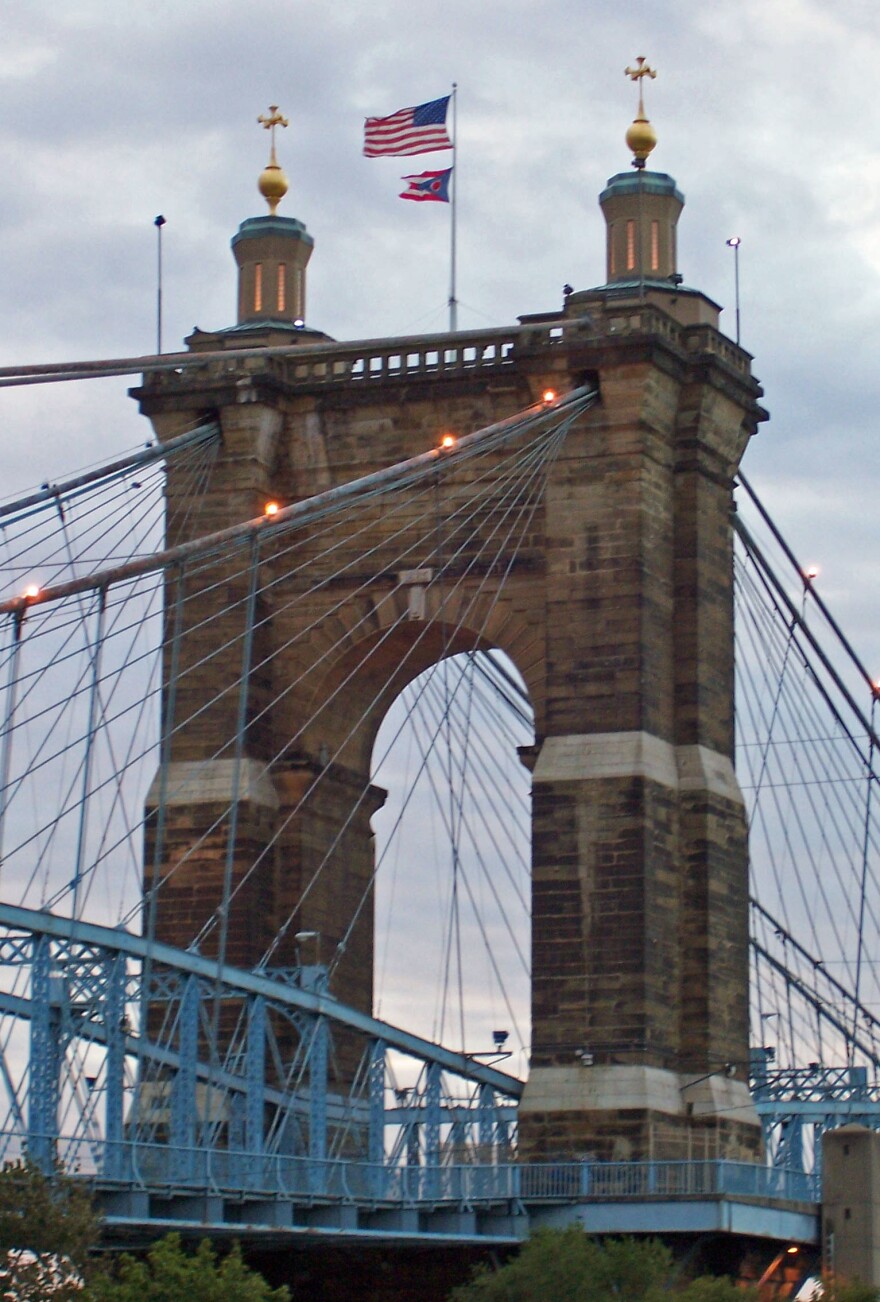You can listen to my interview with author Richard Haw here.
I thought I knew a lot about the Roebling Suspension Bridge. Maybe you do, too.
I knew that construction was suspended during the Civil War…. It was the first bridge linking the North with the South when it opened in 1867… And it became the prototype for Roebling's Brooklyn Bridge in New York City.

But Richard Haw's new book about Roebling's career – Engineering America: The Life and Times of John A. Roebling – taught me a lot more about the challenges Roebling overcame to build the Cincinnati icon. I interview Haw, a professor at the City University of New York, on Around Cincinnati 7 p.m. Sunday June 14 on WVXU-FM and WMUB-FM.
For starters, Haw explains that suspension bridge technology was a modern marvel in the 1860s. Lots of people doubted the Ohio River could be spanned using this method, especially after a suspension bridge over the Licking River between Covington with Newport collapsed in 1854 in two weeks! (I didn't know that.) An 1850 railroad suspension bridge over the Kentucky River lasted only five years.

So Roebling's Ohio River bridge "was on the front page of every newspaper in the country," Haw says.
Since the early 1800s, Cincinnatians talked about a possible bridge to Covington. One worry was whether it could be built high enough to clear steamboats' stacks. There was a preliminary design with one huge pier in the middle of the river, which also could impede river traffic. That design was for a "Y" bridge connecting both Covington and Newport. (I didn't know that, either.)
When we admire Cincinnati's Suspension Bridge today, we don't think of the huge obstacle that Roebling confronted in the 1850s before the Civil War: Slavery. Leaders in Kentucky were concerned that the bridge would be a conduit for escaped slaves, so they inserted a "slave clause" in legislation requiring any slave crossing the bridge to have permission.

Haw spent nearly a month here researching the Cincinnati portion of Engineering America, which also covers Roebling's Pittsburgh and Niagra River suspension bridges; his aqueducts, his other business interests; experiences with séances; and his belief in the "healing power of water," which cost him his life before the Brooklyn Bridge was built by his son.
We just talked about Roebling's Ohio River bridge, including why the bridge "sings" when cars drive over it, and why Haw wishes it wasn't renamed in Roebling's honor.
"I prefer to call it the Covington-Cincinnati Suspension Bridge, as it was originally named. It gave Covington part ownership in the bridge. Covington had much more to gain than Cincinnati from it," Haw says.
What would Roebling think if he knew his Covington-Cincinnati bridge lasted more than 150 years?
"I think he'd be tremendously pleased and proud," Haw says.
Around Cincinnati airs 7-8 p.m. Sundays on WVXU-FM (91.7) and WMUB-FM (88.5) and streamed at wvxu.org.




